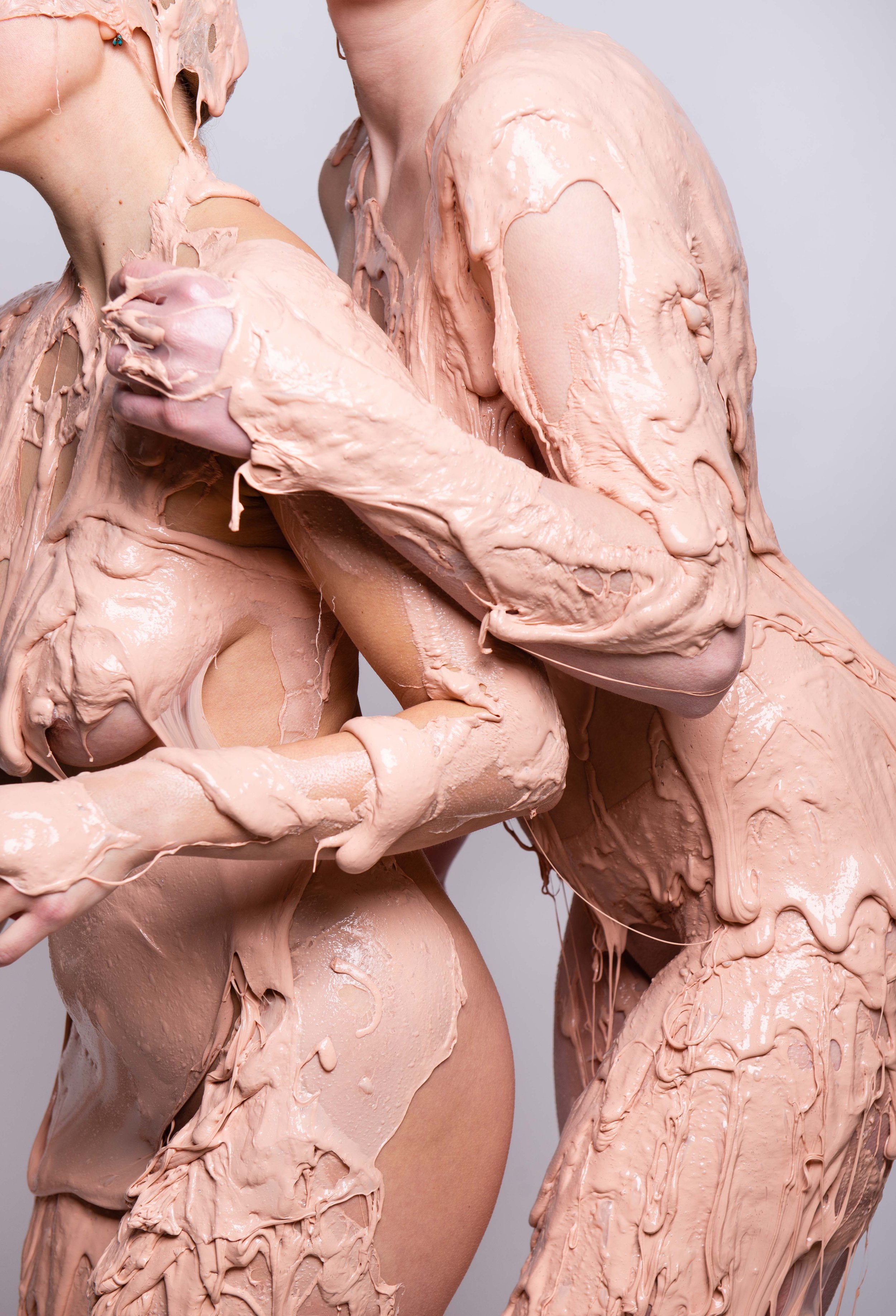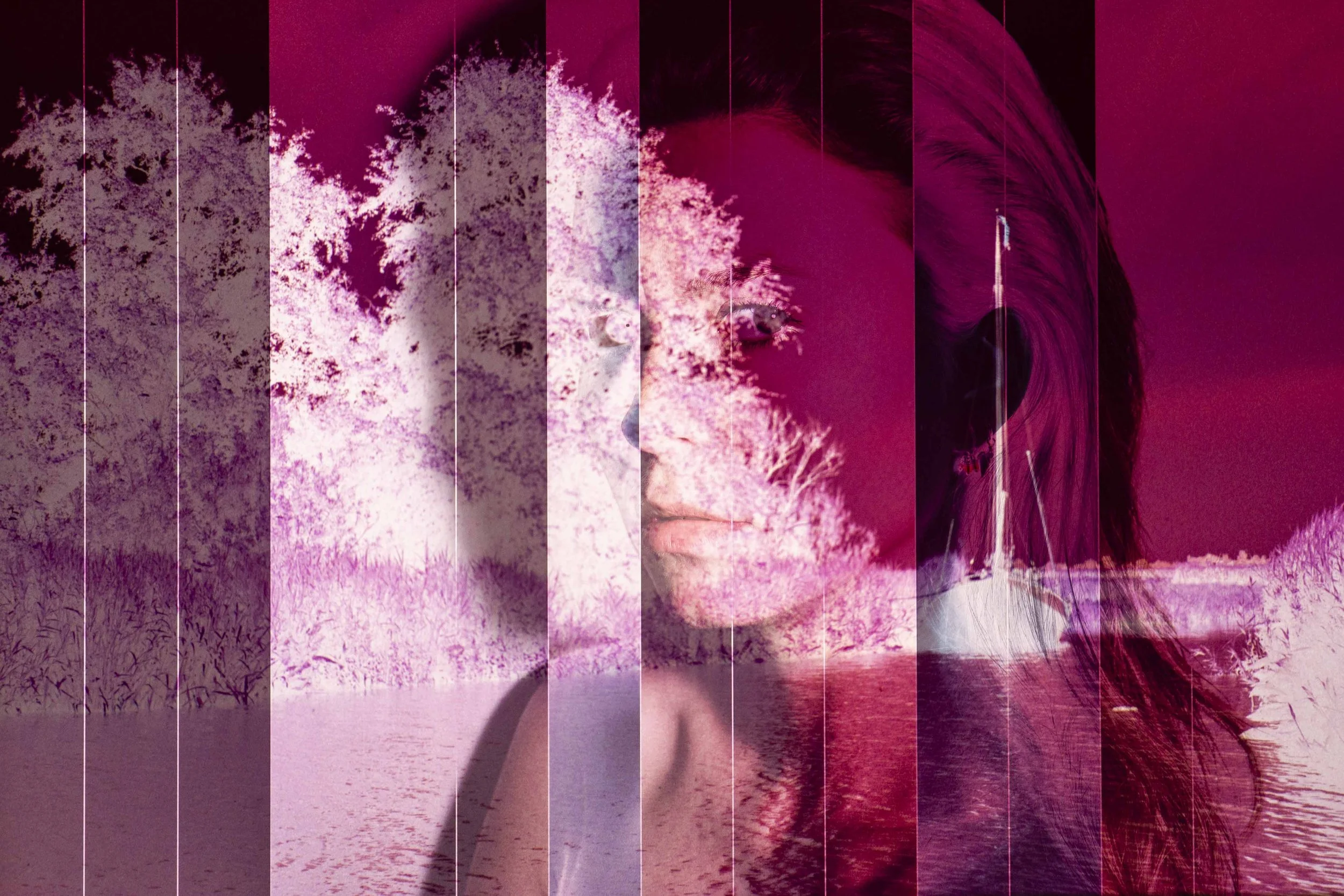Meet Roxanne Wilm
Meet Roxanne Wilm, a French/Dutch theatre designer and photographer known for her conceptual and experimental visual art. Roxanne blends her extensive education in Theatre Design and Photography to explore themes of alienation, the human form, and landscapes. Her approach is deeply influenced by her background in the theatre, employing a variety of techniques that continue to evolve in both digital and analogue formats.
'Microcosme - The body as a Wonderland'. Courtesy of the artist, Roxanne Wilm.
'Microcosme - The body as a Wonderland'. Courtesy of the artist, Roxanne Wilm.
Her first solo exhibition, 'Microcosme - The body as a Wonderland & ORDER | DISORDER' is set to take place at Mina Gallery in Amsterdam, running from August 2 to August 30, 2024. This exhibition will introduce new series that reflect on the human form and the impact of modern life's chaos on personal identity.
'Microcosme - The body as a Wonderland'. Courtesy of the artist, Roxanne Wilm.
Beyond her work in the gallery, Roxanne has contributed to various European theatre productions and now uses her theatrical insights to capture striking images for sustainable brands and artist cover photos. As an avid traveler, her photography is inspired by the landscapes she encounters, with notable recent works from South Africa and planned projects in Bali and the Philippines. Through her innovative use of materials and photographic techniques, Roxanne invites viewers to look beyond the surface, turning everyday views into a canvas of profound questions and insights.
'Body Forms'. Courtesy of the artist, Roxanne Wilm.
Roxanne, could you share how your background in theatre design influences your photographic work, particularly in your unique portrayal of the human body and landscapes?
My background in theatre design profoundly influences my approach to photography. Theatre design, at its core, is about storytelling through visual means—creating environments and atmospheres that enhance what you look at and the narrative. When using staged settings and combining this with the (female) body, lighting, and composition, I want to create mood and depth. When I photograph, it’s like a black box you look into, just like if you are in a theatre!
'Body Forms'. Courtesy of the artist, Roxanne Wilm.
Your exhibition 'Microcosme - The body as a Wonderland' explores the body in unexpected ways. What inspired this concept, and how do you hope it will resonate with viewers?
The concept for 'Microcosme - The body as a Wonderland' is inspired by a desire to explore the human form beyond conventional perspectives. The first time I made a series about the alienation of the body was when I graduated from Theatre Design in 2016. I delve into the alienation, complexity, and mystery of the body, treating it as an extraordinary landscape. Influenced by both my background in theatre design and photography, I aim to create a series that invites viewers to see the body in a new way, with an estranging depth. In other words: Sometimes, you don’t really know what you are looking at. I’m hoping to invite the viewer closer and maybe look twice. I want them to feel a sense of curiosity and wonder, to appreciate the intricate details and unique qualities that make the body a wonderland.
'Microcosme - The body as a Wonderland'. Courtesy of the artist, Roxanne Wilm.
In 'ORDER | DISORDER', you blend old and new photographic methods. What challenges and discoveries did you encounter while combining slide projectors with digital techniques?
In 'ORDER | DISORDER', blending old and new photographic methods presented both challenges and exciting discoveries. Working with old slide projectors from around 1965 alongside digital techniques requires careful experimentation. One challenge was achieving the right balance between the slide projections and the precision of digital photography. Ensuring the projected photos aligned perfectly with the digital portraits demands meticulous adjustments. Another challenge was to adjust the audiovisual technology. I used an old-school Dataton PAX with a MIC3 controller. With the Dataton PAX, I was able to control my projectors to do as I wanted to do. Although this kept me busy for days, I kept trying to program my four projectors as I wanted to. This was challenging but fun!
Themes of alienation and the female form recur in your work. What draws you to these themes, and how do you encourage viewers to engage with and interpret them?
Themes of alienation and the female form recur in my work because they resonate with my exploration of identity and the human body. Self-portraits and camouflaging the body allow me to blend the personal with the universal, transforming the body into a landscape to see the body in a different way than we are used to in our daily lives. This approach helps me delve into different feelings, experiment, and connection, capturing the interplay between the body and the environment.
To engage viewers, I create visual narratives, lines, and forms that invite them to look closer and uncover hidden details. This encourages a more intimate and thoughtful interaction with the work. Through the interplay of composition, texture, and light, I aim to evoke a sense of wonder and contemplation, prompting viewers to reflect on their own feelings of alienation and connection. Ultimately, I hope my work fosters a deeper appreciation for the human form as a unique and expressive landscape.
'Microcosme - The body as a Wonderland'. Courtesy of the artist, Roxanne Wilm.
As an artist committed to sustainability, how does this value influence your choice of materials and projects?
As I’m committed to sustainability, it’s not always possible to use sustainable or biodegradable materials. I do always first seek recycled materials. For instance, I often incorporate found or daily objects. Also, I like to reuse costumes I made for a set design, again in one of my photo series.
Courtesy of the artist, Roxanne Wilm.
Having captured landscapes across various continents, including your recent work in South Africa, what do you seek in a landscape, and how does it inspire your photography?
I’m especially drawn to lines, colors, and contrasts of mountains and hills. When I’m in another country, I’m always open and enthusiastic about the new environment. It inspires when the eye sees a new environment. When I see a landscape I like, I try to photograph it in the most abstract way I can but still leave it as natural as it is.
When I was in South Africa, I climbed up the Lions Head Mountain. This was with my photography buddies I was traveling with. We woke up early in the morning at 4 a.m. to go hiking and get the beautiful sunrise.
'Landscape South Africa'. Courtesy of the artist, Roxanne Wilm.
Looking forward, are there new themes or methods you are excited to explore in your upcoming projects?
I am excited to explore new themes and methods in my upcoming projects. The next installation I will create is about the dualities of being bilingual: half French - half Dutch, countryside versus city, silence versus hustle and bustle. I want to capture this duality I have in me using an old plate camera (a 19th-century technical camera) found in my French grandmother’s house in the North of France, belonging to a great-uncle. I want to capture the silence of the house and its surroundings. Also, this technique is something I’ll have to delve into and experiment with.
But first, I’m excited to show the world my newest series: 'Microcosme - The body as a Wonderland'
'Microcosme - The body as a Wonderland'. Courtesy of the artist, Roxanne Wilm.











